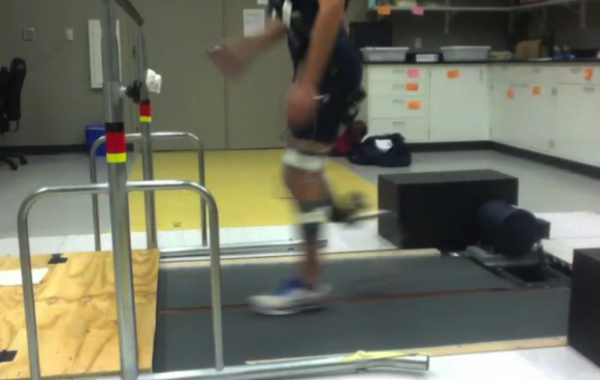College of Sciences Researchers Win Grant to Advance Robotic Prostheses

“One in 190 Americans is currently living with the loss of a limb,” according to a 2008 study. “Unchecked, this number may double by the year 2050.”
According to the Center for Orthotic and Prosthetic Care, most amputations are due to complications of the vascular system (82 percent) and trauma (16 percent). Amputations of lower limbs outnumber those of upper limbs, 84 percent vs 16 percent.
Despite advances in powered, lower-limb prostheses, adoption has been surprisingly low. “One reason is the complexity of robotic prostheses,” says School of Biological Sciences Professor Young-Hui Chang. Customizing the controls to each person’s ability is time consuming and requires multiple and long visits with a clinical professional known as a prosthetist.
To address the problem, the National Science Foundation (NSF) recently awarded Chang and Senior Lecturer Lee Childers a grant to figure out how to make the use of wearable lower-limb robotic prostheses much easier for patients and thereby reduce the burden on the healthcare system. “Our goal is to automate the process so that after one visit with a clinician the patient can complete the tuning automatically from home with regular use of the device,” says Chang, who leads the Comparative Neuromechanics Laboratory at Georgia Tech.
To achieve this goal, Georgia Tech will undertake research to better understand human responses to robotic prostheses. Chang and Childers, working with collaborators at the University of Alabama, aim to incorporate human movement patterns into computer algorithms to improve the walking ability of prosthesis users.
NSF has awarded Chang and Childers $599,684 over four years for their part of the research.
The University of Alabama team is led by Xiangrong Shen, an associate professor of mechanical engineering, and Edward S. Sazonov, a professor of electrical and computer engineering. Their NSF award is $899,799 over four years.
The vision for the two research teams, Chang says, “is a smart device that can monitor the person’s movement and automatically adjust prosthesis control to improve outcomes.”


